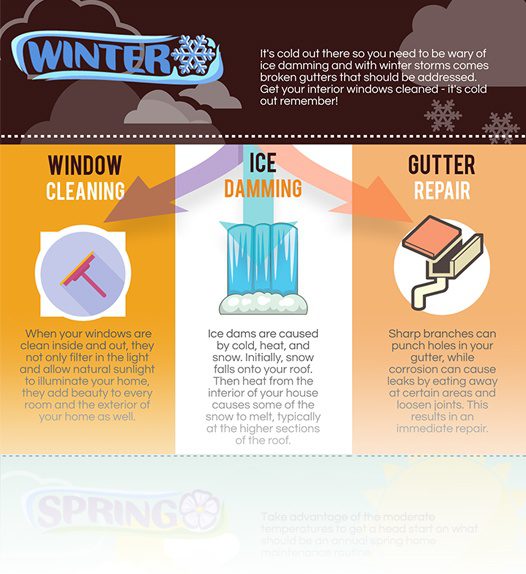Master The Essential Stress Cleaning Techniques Fit For Various Surface Types To Realize Impressive Outcomes-- Check Out The Techniques That Result In An Impeccable Surface
Master The Essential Stress Cleaning Techniques Fit For Various Surface Types To Realize Impressive Outcomes-- Check Out The Techniques That Result In An Impeccable Surface
Blog Article
Authored By-Elgaard Puckett
When it comes to push washing, the strategy you pick can make all the difference in attaining a tidy, streak-free finish. You may discover that difficult surfaces, like concrete, call for a various approach than softer materials, such as wood or plastic. https://universitycleaning66654.dailyblogzz.com/33192596/taking-a-couple-of-moments-for-routine-gutter-cleaning-can-conserve-you-from-incurring-high-repair-work-expenses-discover-the-unseen-advantages-that-can-assist-protect-your-property to adapt your methods to the surface area kind to prevent damage while making the most of cleaning effectiveness. So, what are https://highrisewindowcleanersser10998.ttblogs.com/12266941/the-total-guidebook-for-picking-the-most-effective-window-cleaning-service-to-fulfill-your-certain-requirements for every surface area, and how can you ensure you're making use of the appropriate settings and tools for the task? Allow's explore what you need to understand to get the most effective results.
Difficult Surface areas
When it pertains to push washing tough surface areas, preparation is vital. Before you also think of pulling out the stress washer, make the effort to remove the location of any kind of particles, furnishings, or barriers. You don't want anything entering your method or potentially harmful your tools.
Next off, evaluate the surface for any type of fractures or damage; this will assist you figure out the ideal method and stress setups.
Once you have actually prepared the location, it's necessary to pick the best nozzle. For tough surface areas like concrete or brick, a slim nozzle (15 or 25 levels) functions best to offer a concentrated stream of water that can efficiently remove gunk and spots. Always start at a distance and slowly move more detailed to stay clear of any type of surface damage.
As you begin washing, keep the stick moving to prevent touches and over-saturation. It's also useful to work from the top down, allowing dirt and debris to wash away normally.
Ultimately, keep in mind to rinse the surface area completely after cleansing to get rid of any leftover cleaning agent. With these methods, you'll attain a clean and renewed appearance on all your difficult surface areas.
Soft Surfaces
Stress washing soft surfaces calls for a gentler strategy to secure them from damage. Whether you're cleansing your deck, patio area furnishings, or home siding, making use of excessive pressure can lead to dents, scrapes, and even permanent damage.
Beginning by selecting a low-pressure nozzle, ideally a 25-degree or wider spray pattern, to disperse the water more carefully.
Before you start, it's essential to pre-treat any kind of spots with an appropriate cleansing remedy. This action enables the cleaner to penetrate the dirt and grime, making it much easier to remove without scrubbing as well hard.
Constantly use the service from the bottom approximately avoid spotting.
When you begin stress washing, preserve a distance of at least 12 to 18 inches from the surface area. Move your stick in a sweeping activity, maintaining it parallel to the surface area to prevent focused stress on one place.
Rinse the location thoroughly after cleaning up to remove any residual cleanser.
Finally, evaluate the surface area for any missed places and duplicate the procedure if essential. By following these steps, you can successfully tidy soft surface areas while protecting their integrity and look.
Specialty Surfaces
Cleaning up soft surfaces needs care, but specialized surfaces require even more interest to detail. When you deal with these surface areas, like delicate timber, discolored concrete, or specific sorts of house siding, utilizing the right pressure washing methods is vital to stay clear of damages.
First, evaluate the product. For example, treated timber can frequently stand up to modest pressure, but softer woods like cedar might require a reduced setting. Constantly start with the lowest pressure and progressively boost if needed.
For stained concrete, utilize a follower spray nozzle and maintain a constant range to prevent engraving the surface.
When handling surface areas like vinyl home siding or repainted surface areas, a vast spray pattern aids distribute the pressure uniformly, shielding the finish.
It's also important to utilize detergents especially developed for specialty surface areas. They can enhance cleansing without compromising the material.
Rinse extensively after cleaning to eliminate any type of deposit, as it can bring about discoloration or wear and tear with time.
https://wgrd.com/fall-fishing-tips-to-catch-big-bluegill-in-michigan/
To conclude, grasping pressure washing methods for different surfaces can make all the difference in your cleaning outcomes. For hard surfaces, stay with slim nozzles and a top-to-bottom method, while soft surfaces need a gentler touch with broader nozzles. Do not neglect to pre-treat spots and wash extensively to prevent residue. By adapting your techniques to every product, you'll not just attain a cleaner finish however additionally safeguard the integrity of your surfaces. Happy cleaning!
